THCA Flower Terpenes Guide: How They Create Different Flavors and Effects
When you open a jar of premium THCA flower, the first thing that hits you is the aroma – perhaps citrusy and bright, earthy and musky, or piney and fresh. These distinctive scents come from aromatic compounds called terpenes, which are far more than just pleasant fragrances. THCA flower terpenes are the secret architects behind both the complex flavor profiles and therapeutic effects that make each strain unique.
Understanding terpenes in THCA flower is crucial for anyone looking to optimize their cannabis experience. These naturally occurring compounds work synergistically with cannabinoids to create what scientists call the "entourage effect," where the whole becomes greater than the sum of its parts. Whether you're seeking relaxation after a long day, creative inspiration, or relief from discomfort, the THCA flower terpene profiles in your chosen strain will significantly influence your experience.
This comprehensive THCA terpene guide will explore how these remarkable molecules shape everything from flavor and aroma to therapeutic effects. We'll dive deep into the science behind major terpenes, examine how they combine to create unique strain characteristics, and teach you how to read lab reports to make informed choices about your THCA flower selection.
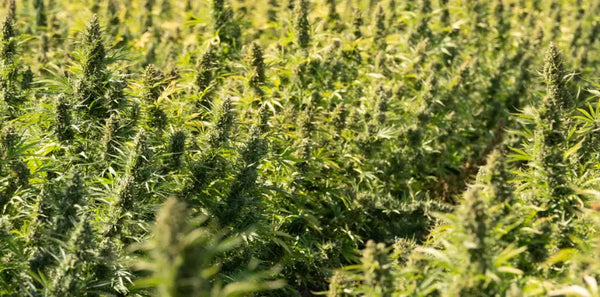
What Are Terpenes? The Science Behind Cannabis Aromatics
Terpenes are organic compounds found throughout the plant kingdom, responsible for the distinctive aromas and flavors in everything from lavender and pine trees to citrus fruits and hops. In cannabis, including THCA flower, these volatile molecules are produced in the same glandular trichomes that synthesize cannabinoids, creating a complex chemical symphony that defines each strain's character.
From a scientific perspective, terpenes are hydrocarbons built from isoprene units – simple five-carbon building blocks that combine in various configurations to create over 40,000 known terpene compounds in nature. In cannabis plants, terpene production serves multiple evolutionary purposes: attracting beneficial pollinators, deterring harmful pests, and protecting the plant from environmental stressors like UV radiation and temperature fluctuations.
The significance of THCA strain terpenes extends far beyond their aromatic properties. These compounds interact with the human endocannabinoid system through multiple pathways, influencing neurotransmitter activity, modulating inflammation responses, and affecting how cannabinoids like THCA are absorbed and processed by the body.
The Entourage Effect in THCA Flower
The THCA flower entourage effect represents one of the most fascinating aspects of cannabis science. This phenomenon describes how terpenes, cannabinoids, and other plant compounds work together synergistically to produce effects that none could achieve alone. Research suggests that terpenes can enhance, modify, or even counteract certain effects of cannabinoids, creating a more nuanced and potentially therapeutic experience.
For example, the terpene myrcene is believed to increase cell membrane permeability, potentially allowing cannabinoids to cross the blood-brain barrier more easily. Meanwhile, limonene may enhance mood and stress relief when combined with cannabinoids, while pinene might help counteract some of the memory-impairing effects associated with high THC consumption.
Understanding how terpenes affect THCA flower flavor and effects empowers consumers to make more informed choices based on their desired outcomes rather than relying solely on strain names or THC percentages.
Major Terpenes in THCA Flower: Profiles and Effects
Myrcene: The Sedating Foundation
Myrcene stands as the most common THCA flower terpene in many indica-dominant strains, often comprising 20-65% of a strain's total terpene profile. This monoterpene produces a distinctive earthy, musky aroma reminiscent of ripe mangoes, with herbal and slightly metallic undertones that some describe as "skunky."
The effects profile of myrcene-dominant strains typically includes pronounced sedation and muscle relaxation. Research indicates that myrcene may enhance the permeability of cell membranes, potentially increasing the absorption of other compounds. This could explain why myrcene-rich strains often produce more intense effects than their cannabinoid percentages might suggest.
Myrcene concentrations above 0.5% are often associated with indica-like effects, contributing to the "couch-lock" sensation many users seek for evening use. Strains high in myrcene are frequently chosen for sleep support, pain management, and deep physical relaxation. The terpene may also possess anti-inflammatory and analgesic properties, making it valuable for those seeking therapeutic benefits.
Limonene: The Mood Elevator
Limonene brings bright, citrusy notes to THCA flower terpene effects, with an unmistakable aroma of fresh lemon, orange, or grapefruit peels. This monoterpene is the second most abundant terpene in nature and plays a crucial role in creating uplifting, energizing cannabis experiences.
The therapeutic potential of limonene extends well beyond its pleasant aroma. Studies suggest this terpene may help alleviate anxiety and depression while promoting alertness and mental clarity. Limonene appears to increase serotonin and dopamine levels in key brain regions associated with mood regulation, potentially explaining why citrusy strains often produce euphoric, stress-relieving effects.
Strains dominated by limonene typically offer daytime-friendly effects that enhance creativity, social interaction, and overall mood without the heavy sedation associated with myrcene. The terpene may also possess anti-fungal and anti-bacterial properties, along with potential benefits for digestive health and immune system support.
Pinene: The Mental Sharpener
Alpha-pinene delivers the fresh, invigorating aroma of pine forests and rosemary to cannabis flower. This bicyclic monoterpene exists in two forms – alpha-pinene (pine-scented) and beta-pinene (woody, herbal) – with alpha-pinene being more common in cannabis.
One of pinene's most remarkable properties is its potential to counteract some negative effects of THC, particularly short-term memory impairment. Research suggests pinene may act as an acetylcholinesterase inhibitor, helping maintain levels of acetylcholine – a neurotransmitter crucial for learning and memory formation.
Pinene-rich strains often promote alertness, focus, and mental clarity while potentially reducing anxiety. This makes them excellent choices for daytime use when mental acuity is important. The terpene also demonstrates bronchodilatory effects, potentially improving airflow to the lungs, and shows promise as an anti-inflammatory and antimicrobial agent.
Linalool: The Gentle Relaxer
Linalool contributes delicate floral notes reminiscent of lavender, with hints of spice and wood. This monoterpene alcohol is perhaps best known for its presence in lavender essential oil, where it's responsible for the plant's renowned calming properties.
In THCA flower terpene profiles, linalool often produces gentle, anxiety-reducing effects without the heavy sedation of myrcene. Research indicates linalool may modulate the neurotransmitter GABA, promoting relaxation and potentially reducing seizure activity. The terpene also shows promise for pain relief and anti-inflammatory effects.
Linalool-dominant strains are frequently chosen by those seeking stress relief, anxiety reduction, and mild pain management while maintaining mental clarity. The terpene's gentle nature makes it suitable for both day and evening use, depending on the overall terpene profile and cannabinoid content.
Caryophyllene: The Therapeutic Powerhouse
Beta-caryophyllene stands unique among terpenes due to its ability to directly interact with CB2 cannabinoid receptors, technically making it both a terpene and a dietary cannabinoid. This sesquiterpene produces spicy, peppery aromas with woody and clove-like undertones.
The CB2 receptor interaction gives caryophyllene significant therapeutic potential, particularly for inflammation reduction and pain management. Unlike CB1 receptors that produce psychoactive effects, CB2 receptors are primarily involved in immune system modulation and inflammatory responses.
Caryophyllene-rich strains often provide therapeutic benefits without overwhelming psychoactive effects, making them suitable for medical users who need to maintain functionality. The terpene shows promise for treating inflammatory conditions, chronic pain, and potentially even addiction recovery support.
Terpinolene: The Complex Energizer
Terpinolene offers one of the most complex aromatic profiles among cannabis terpenes, combining fresh, piney notes with floral, herbal, and slightly citrusy undertones. This monoterpene is less common than others but creates distinctive, often energizing effects when present in significant concentrations.
Despite its fresh, uplifting aroma, terpinolene can produce somewhat sedating effects in high concentrations, demonstrating how terpene effects can be more complex than their aromas might suggest. However, in moderate amounts and combined with other energizing terpenes, terpinolene often contributes to creative, cerebral effects.
Terpinolene also demonstrates antioxidant and potentially anti-cancer properties in preliminary research, adding to its therapeutic value. Strains high in terpinolene are often sought by those looking for unique flavor profiles and balanced, creative effects.
Humulene: The Appetite Modulator
Humulene provides woody, earthy aromas with hoppy, spicy undertones – unsurprising given its abundance in hops used for beer brewing. This sesquiterpene is less common in cannabis but creates notable effects when present in significant concentrations.
One of humulene's most interesting properties is its potential appetite-suppressing effects, contrasting with the "munchies" typically associated with cannabis use. This makes humulene-rich strains potentially valuable for those seeking cannabis benefits without increased appetite.
Research also suggests humulene possesses anti-inflammatory, antibacterial, and potentially anti-tumor properties. When combined with other terpenes, humulene can contribute to energizing, focusing effects while potentially reducing inflammation and supporting overall wellness.
Understanding Terpene Combinations in Cannabis
The magic of terpene combinations in THCA strains lies not in individual compounds but in how they work together to create unique effects profiles. Unlike single-note fragrances, cannabis terpene profiles are complex symphonies where each terpene contributes to the overall experience while being influenced by its companions.
Synergistic Terpene Interactions
When terpenes combine, they can enhance, modify, or even counteract each other's effects through various mechanisms. For example, the combination of pinene and limonene often creates energizing, focus-enhancing effects that are more pronounced than either terpene alone might produce. Meanwhile, the pairing of myrcene and linalool typically amplifies relaxation and sedation beyond what each could achieve individually.
Some terpene combinations create entirely new effect profiles. The mix of caryophyllene and humulene, both sesquiterpenes, often produces anti-inflammatory effects with clear-headed functionality – perfect for daytime medical use. When limonene combines with pinene and small amounts of caryophyllene, the result might be an uplifting, creative experience with subtle stress relief.
Common Terpene Profiles in Popular Strain Categories
Indica-Dominant Profiles typically feature high myrcene concentrations (often 30-65% of total terpenes) combined with linalool, caryophyllene, and sometimes humulene. This combination creates the relaxing, sedating effects associated with evening use and physical relief.
Sativa-Dominant Profiles often showcase limonene, pinene, and terpinolene as primary terpenes, with lower myrcene concentrations. These profiles tend to produce energizing, creative, and mood-enhancing effects suitable for daytime use.
Hybrid Profiles blend elements from both categories, creating balanced effects that might combine mental clarity with physical relaxation, or energy with stress relief. The specific combination and ratios determine the overall character.
Seasonal and Environmental Influences on Terpene Profiles
Terpene production in cannabis plants responds dynamically to environmental conditions, meaning the same genetic strain can produce notably different terpene profiles depending on growing conditions, harvest timing, and curing methods. Temperature, humidity, light spectrum, and even soil composition can influence which terpenes develop and in what concentrations.
This environmental sensitivity explains why the same strain name from different growers or harvests might smell and effect differently. It also highlights the importance of lab testing and terpene analysis rather than relying solely on strain names when selecting THCA flower.
Reading THCA Terpene Lab Reports: Your Guide to Informed Selection
Learning how to interpret reading THCA terpene lab reports transforms strain selection from guesswork into precision. These scientific documents provide detailed breakdowns of exactly which terpenes are present and in what concentrations, allowing for educated predictions about flavor, aroma, and effects.
Understanding Terpene Percentages and Concentrations
Terpene concentrations in lab reports are typically expressed as percentages of total dry weight or as milligrams per gram (mg/g). A terpene showing 1.0% concentration means it comprises 10mg per gram of flower, or about 10,000 parts per million.
High Concentrations (1.0%+): Terpenes at these levels will significantly influence the strain's character, contributing notably to both aroma and effects.
Moderate Concentrations (0.3-1.0%): These terpenes provide supporting roles, adding complexity to the profile without dominating.
Low Concentrations (0.1-0.3%): While present, these terpenes contribute subtle notes and may provide minor effect modulation.
Trace Amounts (<0.1%): These terpenes are detectable but unlikely to significantly impact the experience.
Interpreting Total Terpene Content
The total terpene percentage indicates the overall aromatic intensity and potential for entourage effects. High-quality THCA flower typically shows total terpene content between 1-4%, with exceptional samples reaching 5% or higher.
Low Total Terpenes (<1%): May indicate older material, poor storage, or genetics with naturally low terpene production. Effects might be more one-dimensional.
Moderate Total Terpenes (1-2%): Typical for well-cured, properly stored flower with good aromatic characteristics and balanced effects.
High Total Terpenes (2%+): Indicates exceptional quality with intense aromas and complex effect profiles. These samples often provide the most pronounced entourage effects.
Identifying Dominant Terpenes and Ratios
The terpene present in highest concentration typically provides the foundation for the strain's character, but the supporting cast matters enormously. A myrcene-dominant strain with significant limonene might feel more uplifting than one with linalool support. Similarly, a limonene-forward strain with caryophyllene backing might provide energizing effects with subtle body relaxation.
Pay attention to the ratios between major terpenes. Balanced profiles (where multiple terpenes show similar concentrations) often produce complex, nuanced effects, while single-terpene-dominated profiles tend toward more predictable, straightforward experiences.
Red Flags in Terpene Reports
Be cautious of reports showing only one or two terpenes, which might indicate incomplete testing or degraded samples. Similarly, suspiciously perfect round numbers (exactly 1.00% rather than 0.97% or 1.03%) might suggest less precise testing methods.
Reports lacking testing dates or showing very old test dates should raise concerns about freshness, as terpenes degrade over time, especially when exposed to light, heat, or air.
Maximizing Your THCA Flower Experience Through Terpene Selection
Armed with knowledge of how terpenes affect THCA flower flavor and effects, you can make strategic selections based on your specific needs and preferences rather than relying on strain names or THC percentages alone.
Selecting for Desired Effects
For Energy and Focus: Seek strains with high limonene and pinene, moderate to low myrcene, and possibly some terpinolene. These profiles typically provide clear-headed, energizing effects suitable for productive activities.
For Relaxation and Sleep: Look for high myrcene concentrations (>0.5%) combined with linalool and caryophyllene. These combinations often produce the sedating effects desired for evening use.
For Balanced, All-Day Use: Choose strains with moderate levels of multiple terpenes rather than single-terpene dominance. Balanced profiles often provide versatile effects suitable for various activities.
For Creative Work: Terpinolene-forward strains with limonene and pinene support often enhance creativity and artistic endeavors while maintaining mental clarity.
Timing Your Consumption
Understanding terpene effects can help optimize timing for maximum benefit. Energizing terpene profiles work best earlier in the day, while sedating profiles are better saved for evening. However, individual sensitivity varies, and some people find certain terpenes affect them differently than expected.
Storage Considerations for Terpene Preservation
Proper storage maintains terpene integrity and ensures you experience the full aromatic and effects profile indicated in lab reports. Store THCA flower in airtight containers away from light, heat, and moisture. Glass jars with tight-fitting lids work excellently, as do specialized cannabis storage containers with humidity control.
Avoid plastic bags for long-term storage, as terpenes can degrade plastic over time and absorb unwanted flavors. Temperature stability matters more than specific temperature – consistent cool temperatures preserve terpenes better than fluctuating conditions.
Frequently Asked Questions About THCA Flower Terpenes
What's the difference between terpenes in THCA flower versus regular cannabis?
The terpenes themselves are identical – what differs is the overall cannabinoid profile. THCA flower contains primarily THCA (the non-psychoactive precursor to THC) rather than activated THC, but the terpene profiles remain the same. This means you can expect similar aromatic and therapeutic effects from terpenes, though the overall experience may differ due to the different cannabinoid interactions.
Can terpenes get you high?
Terpenes alone don't produce intoxicating effects, but they significantly influence how cannabinoids affect you through the entourage effect. Some terpenes like myrcene may enhance cannabinoid absorption, potentially intensifying effects, while others like pinene might provide balancing influences.
How quickly do terpenes degrade in stored flower?
Terpene degradation begins immediately after harvest but accelerates with exposure to light, heat, air, and moisture. Properly stored flower can maintain good terpene profiles for 6-12 months, while poorly stored material may lose significant terpenes within weeks. The most volatile terpenes (like limonene) typically degrade fastest.
Why do some strains with identical names smell different?
Cannabis genetics represent only part of the story – growing conditions, harvest timing, drying methods, and curing processes all influence final terpene profiles. Environmental factors like temperature, humidity, and light spectrum can dramatically alter which terpenes develop and in what concentrations.
Are synthetic terpenes as effective as natural ones?
While chemically identical molecules should theoretically produce similar effects, many users report differences between natural cannabis-derived terpenes and synthetic versions. This might be due to the complexity of natural terpene profiles, which contain numerous minor compounds that synthetic versions might lack.
How can I enhance terpene absorption?
Consuming terpene-rich foods (like mangoes for myrcene or citrus for limonene) about 45 minutes before using cannabis may enhance effects. Proper storage and using fresh flower ensures maximum terpene content. Some users also find that slower consumption methods allow better terpene appreciation.
Advanced Terpene Considerations for Connoisseurs
Minor Terpenes and Their Contributions
Beyond the major terpenes, cannabis contains dozens of minor aromatic compounds that contribute subtly but significantly to overall effects profiles. Compounds like ocimene (sweet, floral), valencene (citrus, woody), and nerolidol (fresh, woody) appear in smaller concentrations but add complexity and nuance to the experience.
These minor terpenes often work synergistically with major ones, creating the subtle differences between strains that share similar primary terpene profiles. Understanding their contributions helps explain why two myrcene-dominant strains might still feel distinctly different.
Seasonal Variations in Terpene Production
Cannabis terpene profiles naturally vary throughout the growing season, with outdoor plants showing the most dramatic changes. Early season flowers might emphasize different terpenes than late season harvests from the same plant. Indoor cultivation offers more control but still shows variation based on environmental management.
Harvest timing significantly impacts final terpene profiles. Earlier harvests often preserve more volatile terpenes like limonene and pinene, while later harvests may show increased sesquiterpenes like caryophyllene and humulene. This knowledge helps consumers understand why the same strain from the same grower might vary between harvest cycles.
The Role of Curing in Terpene Development
The curing process continues terpene evolution even after harvest. Proper curing allows chlorophyll breakdown while preserving and sometimes enhancing desirable terpenes. However, extended curing can also lead to terpene degradation if not carefully managed.
Some terpenes actually increase during early curing as plant enzymes continue working, while others begin degrading immediately. Understanding these processes helps explain why properly cured flower often smells and effects differently than fresh-dried material.
Making Informed Decisions: Your THCA Flower Selection Strategy
Combining terpene knowledge with personal experience creates the foundation for consistent, satisfying THCA flower selection. Start by identifying terpene profiles that consistently provide your desired effects, then seek out strains and products matching those profiles regardless of strain names or marketing claims.
Building Your Personal Terpene Profile
Keep notes on strains you've enjoyed, noting their lab-tested terpene profiles alongside your experience notes. Over time, you'll identify patterns – perhaps you consistently enjoy strains with high limonene and pinene, or maybe myrcene-forward strains always provide your preferred evening effects.
This personalized database becomes invaluable when exploring new strains or products. Instead of gambling on unfamiliar strain names, you can select based on terpene profiles similar to those you've previously enjoyed.
Quality Indicators Beyond Terpenes
While terpenes provide crucial information, consider them alongside other quality indicators. Visual appeal, proper trim, appropriate moisture content, and absence of seeds or stems all indicate careful cultivation and processing that likely extends to terpene preservation.
Fresh, properly stored flower should have strong, distinct aromas that match its lab-tested profile. Weak or off-putting odors might indicate age, poor storage, or contamination that could affect both safety and experience quality.
Conclusion: Elevating Your THCA Flower Experience Through Terpene Mastery
Understanding THCA flower terpenes transforms cannabis consumption from random experimentation into purposeful, predictable experiences tailored to your specific needs and preferences. These remarkable aromatic compounds serve as nature's flavor chemists and therapeutic modulators, creating the diverse range of experiences that make cannabis such a versatile plant medicine.
The journey from novice to terpene-informed consumer requires patience and attention to detail, but the rewards justify the effort. By learning to read lab reports, understanding how different terpenes interact, and recognizing quality indicators, you gain the tools needed to consistently select flower that delivers your desired outcomes.
Whether you're seeking the energizing clarity of limonene and pinene, the gentle relaxation of linalool, or the deep sedation of myrcene-rich profiles, terpene knowledge empowers informed decision-making. The THCA flower entourage effect becomes not just a scientific concept but a practical tool for optimizing your cannabis experience.
Remember that reading THCA terpene lab reports provides the most reliable information for strain selection. Don't rely solely on strain names or THC percentages – these markers tell only part of the story. The complete terpene profile reveals the full character of your chosen flower and helps predict its effects with remarkable accuracy.
As you continue exploring the world of THCA strain terpenes, approach each new profile with curiosity and careful attention to how different combinations affect you personally. Your individual endocannabinoid system and sensitivity to various compounds will influence how terpenes affect you, making personal experience the ultimate guide for optimization.
The future of cannabis consumption lies in this personalized, science-based approach to selection. By understanding how terpene combinations in THCA strains create specific effects profiles, you join a growing community of informed consumers who prioritize quality, consistency, and therapeutic value over marketing hype or recreational trends.
Start your terpene journey today by examining the lab reports of strains you've enjoyed, identifying the terpene patterns that work best for you, and using that knowledge to guide future selections. With time and attention, you'll develop an intuitive understanding of how these remarkable molecules shape your cannabis experience, leading to more satisfying, predictable, and therapeutic outcomes from your THCA flower terpene profiles.

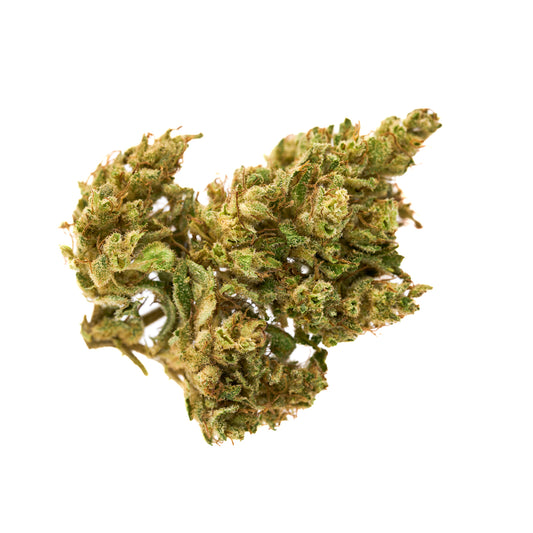
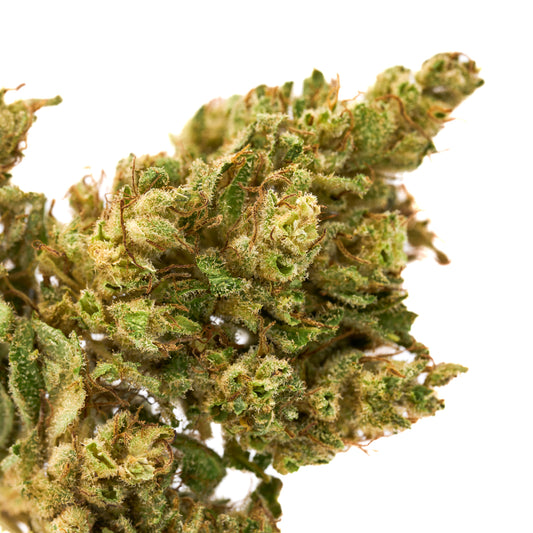
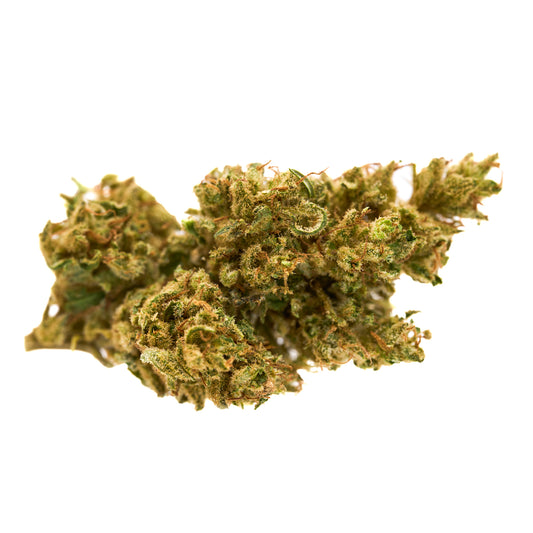
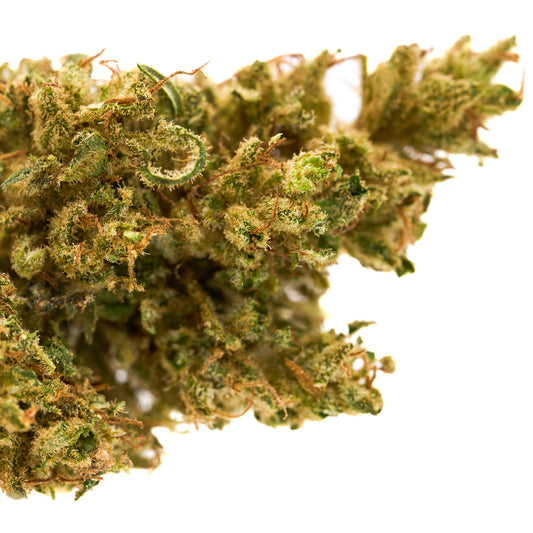
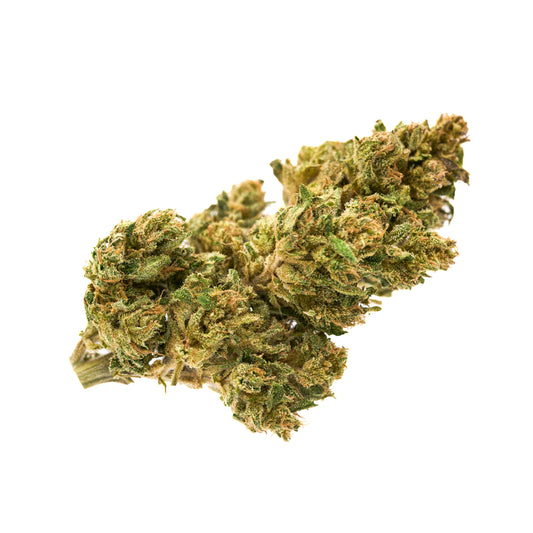
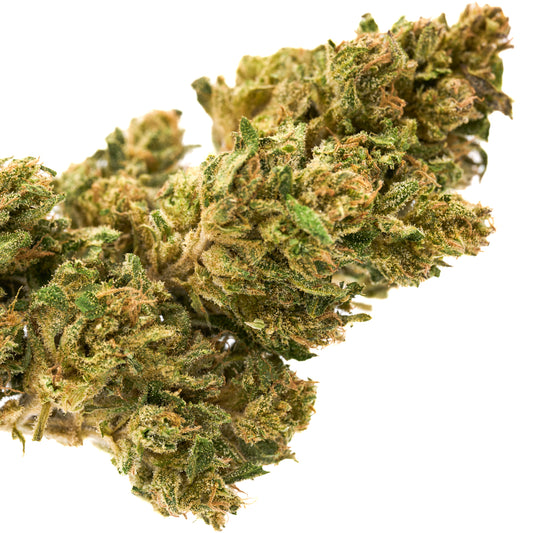



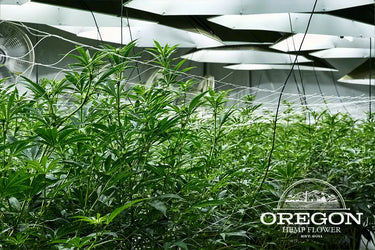

Leave a comment
Please note, comments need to be approved before they are published.